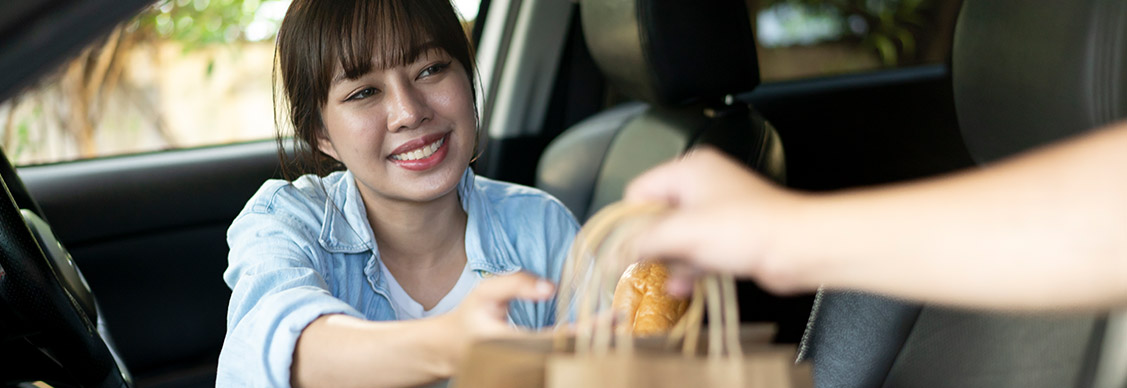Grocers are playing click-and-collect catch up
Hybrid isn’t just a term for the office as consumers shift to grocery apps
Hybrid might be a term synonymous with working at the office nowadays. But it’s also at the core of how we grocery shop.
With nearly 40% of consumers buying groceries through a mix of in store and online shopping, according to a recent PYMTS study, grocers are investing heavily in getting hybrid shopping strategies right.
Grocers are targeting several areas, from picking out products to a seamless check out.
“It’s all about taking some of the elements consumers favor from both experiences and blending them,” says Josh Broehl, Big Red Rooster senior vice president and managing director. “For example, in store the checkout process has become cumbersome and consumers who use mobile pick-up desire that same frictionless experience in store. Using technology to create scan and go technology in store is one way to blend the experiences.”
Part of the shift is down to playing catch up. Because grocers were behind in mobile technology pre-pandemic, a lot of investment is going toward bettering their click-and-collect mobile platforms, according to JLL’s 2023 Retail Grocery Outlook.
“The need for grocers to respond by rethinking their space plans is a requirement,” says Emily Miller, Big Red Rooster, senior vice president of strategy and insight. “You can’t satisfy your customer needs without a solution for click and collect today. Almost every consumer wants that solution.”
Looking for more insights? Never miss an update.
The latest news, insights and opportunities from global commercial real estate markets straight to your inbox.
Getting hybrid right
Whether it’s waiting for employees to push large carts through narrow isles as they fulfill click-and-go orders or circling the parking lot a few times because the designated pick-up area is congested, consumers are pressed by old-school grocery store designs.
“And just like the hybrid worker, what hybrid consumers want from each experience greatly varies,” Miller says.
In store shoppers tend to favor a more experiential approach to buying their groceries. And legacy stores were designed to optimize that journey, says Broehl.
Grocers’ biggest issue is that their stores were designed for pre-mobile orders and optimized solely for a consumer journey. When you add elements of mobile shopping to that footprint—remember the congestion in narrow isles where employees push oversized carts to fulfill online orders—that journey loses some appeal.
Investment Opportunities
That same shopper, though, favors a completely different experience when they place a mobile pick-up order.
While in-store shoppers tend to appreciate the experiential nature of strolling through the aisles, the mobile app user favors speed and convenience. However, when it comes to mobile platforms, the experience is rarely seamless and often wildly different from what consumers experience in the store, Miller says. Issues range from ease of using coupons to being able to make live adjustments to orders.
Much of consumer expectations, Miller says, derive from how well restaurants and fast-food chains adapted to hybrid diners during the pandemic.
“Consumers don’t just want that same level of experience when it comes to grocery shopping; they expect it,” she says.
Appealing to online and in-person shoppers
This blended approach to how consumers shop is leading to many conversations about how best to adapt and convert a legacy store, says Broehl. “And just like the office, there isn’t a one-size-fits-all approach,” he adds.
In stores, Broehl says grocers are investing more in wayfinding, whether signage, architectural features, or even coloration on buildings. Walmart, for example, he said, has made strides in calling out parts of their store as designated pick-up through architectural features and coloration. Hence, customers know exactly where to go when they arrive on site.
Consumers also are looking for a more consistent experience regarding the technology.
Imagine if you took the efficiency of a Chick-fil-A drive-thru and an Amazon warehouse and stuck them together. That is the sort of experience mobile grocery shoppers expect.
“What a lot of mobile platforms fail at is creating that sensory experience customers still highly value,” Miller says.
Recent examples of some grocers trying to address these concerns include Southeastern Grocers, the holding company of chains including Winn-Dixie and Harvey’s, developing its proprietary e-commerce service that allows customers to access the most up-to-date offerings in pricing, place online orders and explore curbside pick-up options. In addition, Walmart, the top U.S. seller of groceries by share of total dollars spent, rolled out a new app feature called “Text to Shop,” which allows consumers to order products via text message. And, after a successful trial, Target is launching drive-up returns this Spring–and they’ll even bring a Starbucks to your car.
Recently, after receiving $10.1 million in seed funding, grocer Addie’s opened its first pick-up-only concept in Massachusetts, according to Forbes.
“As consumer data continues to build and AI technology continues to improve, we will see greater opportunity in developing shopping lists and anticipating shopping items,” Broehl says. “If technology can auto-populate that list, and the customer can edit from there, then most of the work has already been done for them, which improves the overall experience.”
Contact Josh Broehl
Big Red Rooster senior vice president and managing directorWhat’s your investment ambition?
Uncover opportunities and capital sources all over the world and discover how we can help you achieve your investment goals.




